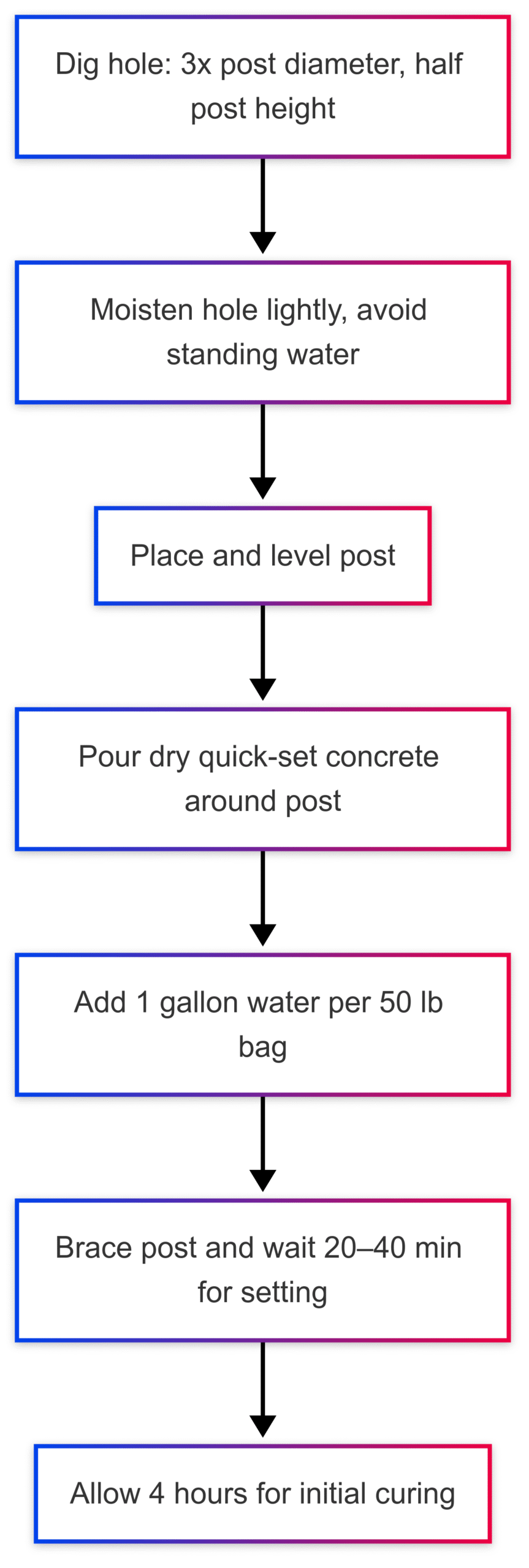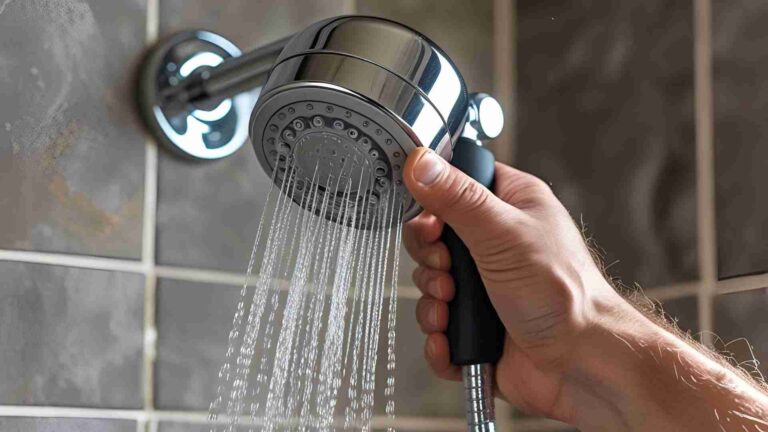Can I Use Quick Set Concrete In The Rain
Learn if quick-set concrete can be used in rain, its effects, and expert tips for pouring and curing concrete in wet conditions effectively.
Quick-set concrete, also known as fast-setting concrete, is a popular choice for projects requiring rapid installation, such as setting fence posts or pouring small slabs. Its ability to set within 20-40 minutes makes it appealing for contractors and DIY enthusiasts alike. However, one critical question often arises: Can you use quick-set concrete in the rain? Rain can significantly impact the mixing, pouring, and curing processes of concrete, potentially compromising its strength and durability. This article explores the effects of rain on quick-set concrete, provides practical solutions for working in wet conditions, and offers expert tips to ensure a successful project.
Understanding Quick-Set Concrete
Quick-set concrete is a pre-mixed dry concrete blend containing calcium chloride or similar accelerators, enabling it to harden rapidly—often within 30 minutes of adding water. It is commonly used for setting posts, sleeves, anchors, or pouring slabs at least 2 inches thick. According to QUIKRETE®, a leading manufacturer, a 50 lb (22.7 kg) bag yields approximately 0.375 cubic feet (11 liters) of mixed concrete, sufficient to set a 4-inch diameter post in a 10-inch diameter hole, 2 feet deep, using two bags.
Key Properties of Quick-Set Concrete
The following table summarizes the technical specifications of QUIKRETE® Fast-Setting Concrete Mix, based on ASTM standards:
| Property | Test | Results |
|---|---|---|
| Setting Time | ASTM C191 | 20–40 minutes |
| Compressive Strength (2 hrs) | ASTM C39 | 400 psi (2.8 MPa) |
| Compressive Strength (24 hrs) | ASTM C39 | 1000 psi (6.9 MPa) |
| Compressive Strength (7 days) | ASTM C39 | 2500 psi (17.2 MPa) |
| Compressive Strength (28 days) | ASTM C39 | 4000 psi (27.6 MPa) |
Despite its rapid setting time, quick-set concrete requires up to 4 days to fully cure and achieve maximum strength. Proper handling during mixing, pouring, and curing is critical to avoid compromising its structural integrity, especially in wet conditions.
The Impact of Rain on Quick-Set Concrete
Rain can affect quick-set concrete at various stages: storage, mixing, pouring, and curing. Understanding these impacts is essential for ensuring a successful project.
1. Storage Challenges
Quick-set concrete must remain dry until mixed. Moisture exposure during storage can cause the mix to clump, rendering it unusable. Clumped concrete cannot be mixed thoroughly, leading to weak spots in the final product.
Storage Best Practices:
- Store bags on pallets to keep them off damp floors or ground.
- If stored outdoors, cover with tarps to prevent water contact, ensuring the tarp is sloped to allow runoff.
- Check bags for hardened chunks before use and return any compromised bags to the supplier.
2. Mixing in the Rain
The water-cement ratio is critical for achieving the correct slump (consistency) in quick-set concrete. Rain can disrupt this balance by adding uncontrolled water during mixing, resulting in a soupy mix that weakens the concrete. Proper slump is typically 2–3 inches (51–75 mm), measured by piling the mix and assessing its settlement.
Mixing Guidelines:
- Mix under a sheltered area to prevent rainwater from entering the mix.
- Use precise water measurements (approximately 4–5 pints per 50 lb bag, per QUIKRETE® instructions).
- For hand mixing, add water gradually to achieve a thick, sludge-like consistency.
- Avoid mixing in open containers during rain to prevent dilution.
3. Pouring in Wet Conditions
Pouring quick-set concrete in the rain is generally not advisable due to the risk of excess water altering the mix or compromising the curing process. However, small projects like setting posts can sometimes be managed with precautions.
Pouring Options:
- Sheltered Pouring: Set up a temporary shelter using stakes and tarps to protect the work area. Ensure the pouring surface is dry and free of standing water.
- Dry Pour Method: For post-setting, quick-set concrete can be poured dry into a moist hole, relying on ground moisture to hydrate the mix. The hole should be three times the post’s diameter, with no standing water to avoid weakening the concrete.
- Displacing Water: When pouring mixed concrete into a wet hole, the heavier concrete can displace water upward. However, excessive groundwater can still weaken the mix.
4. Curing and Rain
Rain falling on freshly poured concrete can damage the surface, disrupt the water-cement ratio, and delay curing. The curing process, a chemical reaction called hydration, takes up to 28 days for full strength but is most vulnerable in the first 4–8 hours.
Effects of Rain on Curing:
- Surface Damage: Rain can cause scaling (flaking or peeling) or a powdery finish, reducing abrasion resistance.
- Weakened Strength: Excess water can dilute the mix, lowering compressive strength and increasing the risk of cracks.
- Craze Cracking: Fine, random cracks may appear after excess rainwater evaporates, especially in freeze-thaw cycles.
Curing Protection:
- Cover fresh concrete with plastic sheeting or waterproof tarps within 2–4 hours of pouring.
- Ensure good drainage to prevent water pooling on the surface.
- After 4–8 hours, when the concrete is hard enough to walk on, rain typically has minimal impact.
Practical Solutions for Pouring Quick-Set Concrete in the Rain
While pouring quick-set concrete in the rain is not ideal, it may be unavoidable in regions with frequent rainfall, such as Florida or Northern California. Here are actionable strategies to mitigate rain-related risks:
1. Plan Ahead with Weather Forecasts
Always check the weather forecast before starting a project. If heavy rain is expected, consider rescheduling. For light rain or unpredictable weather, prepare contingency measures such as tarps, plastic sheeting, or temporary shelters.
2. Prepare the Work Site
- Dry Surfaces: Ensure the pouring surface is free of standing water. Use a pump or wet vacuum to remove water from holes or trenches.
- Shelter Setup: Create a temporary shelter using tarps and timber or stakes. Ensure the shelter is wind-resistant to avoid collapse during pouring.
- Drainage: Clear gutters, downspouts, and cavities to prevent water from pooling or flowing onto the concrete.
3. Assess and Repair Damage
If rain occurs shortly after pouring, assess the concrete for damage once the rain stops:
- Visual Inspection: Look for scaling, powdery surfaces, or craze cracking.
- Scratch Test: Use a screwdriver to test abrasion resistance, comparing it to undamaged concrete.
- Repairs: For minor surface damage, apply a thin layer of fresh concrete. For severe damage in thin slabs, remove and replace affected sections.
4. Use the Dry Pour Method for Posts
For setting posts in wet conditions, the dry pour method can be effective:
- Dig a hole three times the post’s diameter and half the above-ground post height.
- Moisten the hole lightly with a hose if it’s not already wet, but avoid standing water.
- Place the post, level it, and pour dry quick-set concrete around it.
- Add approximately 1 gallon of water per 50 lb bag, ensuring the mix is saturated without excess water.
- Brace the post and allow 20–40 minutes for setting, with full curing in 4 hours.
Chart: Dry Pour Process for Posts

5. Timing and Temperature Considerations
- Optimal Conditions: Pour concrete at 40–60°F for best results. Avoid extreme heat, which can cause rapid evaporation, or freezing temperatures, which slow hydration.
- Rain Timing: If rain occurs within 2–4 hours of pouring, cover the concrete immediately. After 4–8 hours, the concrete is typically stable enough to withstand light rain.
Expert Tips for Working with Quick-Set Concrete
To maximize the success of your quick-set concrete project, especially in wet conditions, follow these expert tips from industry professionals:
- Check Bag Quality: Inspect bags for clumps before mixing. Return any hardened bags to avoid weak concrete.
- Prepare Tools in Advance: Have all tools (shovels, rakes, mixing augers) ready before mixing to avoid premature setting.
- Use Cold Water: In hot weather, use cold water or ice to slow setting. In cold weather, use warm water to maintain hydration.
- Add Water Gradually: Start with 4 pints of water per 50 lb bag and add more slowly to achieve the correct slump. Avoid soupy mixes.
- Mix for Larger Projects: For large pours, mix in a barrel-type or mortar mixer, adding water incrementally to maintain consistency.
- Avoid Cold Joints: Pour the entire project at once to prevent weak seams where fresh concrete meets set concrete.
- Protect Skin and Lungs: Wear long sleeves, gloves, and a mask rated for concrete dust to avoid skin irritation from lime or inhalation of fine particles.
- Clean Tools Properly: Wash mixing buckets and tools with a hose outdoors to avoid clogging plumbing with concrete residue.
- Store Unused Mix: Seal opened bags in plastic garbage bags to prevent moisture absorption and extend shelf life.
- Consult Professionals: For complex projects or persistent rain, contact a professional contractor for guidance.
Pricing and Availability
Quick-set concrete is widely available at home improvement stores like Home Depot, Lowe’s, or directly from manufacturers like QUIKRETE®. Pricing varies by region and supplier but typically ranges from $5 to $10 per 50 lb bag. For example:
- QUIKRETE® Fast-Setting Concrete Mix (50 lb): ~$6–8 per bag.
- Bulk Purchases: Discounts may apply for bulk orders (e.g., pallets of 42 bags).
- Delivery: Same-day or next-day delivery is often available for an additional fee, depending on the supplier.
For specific pricing, check with local suppliers or visit the manufacturer’s website (e.g., www.quikrete.com). For professional services, companies like Master Mix Concrete or ACPLM offer quotes for concrete delivery and installation, particularly in regions like Tampa or Watford.
Case Study: Rain After Pouring Quick-Set Concrete
A homeowner on a Reddit thread (r/Concrete) described a scenario where a contractor used quick-set concrete to set fence posts, and rain began an hour later. The concern was whether the rapid setting time (marketed as 20–40 minutes) would prevent damage. Experts on the thread advised:
- After 3 hours, a tight finish should withstand light rain, but covering is recommended to prevent puddling or powdery surfaces.
- For exposed aggregate finishes, rain may aid in washing away the top mortar layer if the concrete has set enough to retain aggregate.
- If the concrete appears powdery or shows scaling, minor repairs with fresh concrete may suffice.
This case highlights the importance of timing and protection. Even with quick-set concrete’s rapid hardening, rain within the first few hours can still cause issues if not managed properly.
When to Avoid Pouring in the Rain
Pouring quick-set concrete in heavy rain or on saturated ground is generally a bad idea, particularly for structural applications like slabs or footings. In regions with high groundwater, such as Northern California after heavy rains, the ground may be too wet to ensure a stable mix. Experts recommend:
- Avoiding pours into water-filled holes or trenches, as excess water disrupts the water-cement ratio.
- Using a water pump or wet vacuum to remove standing water before pouring.
- Postponing projects during heavy rain forecasts unless proper shelters are in place.
In Florida, where rain is frequent, contractors often rely on temporary shelters and precise timing to complete projects during the wet season.
Conclusion
Using quick-set concrete in the rain is challenging but not impossible with proper precautions. By storing bags correctly, mixing under cover, protecting the pour site, and assessing for damage, you can mitigate the risks of rain. The dry pour method is a viable option for setting posts in wet conditions, provided standing water is avoided. For best results, plan around weather forecasts, maintain the correct water-cement ratio, and consult professionals for large or complex projects.
Whether you’re a DIY enthusiast or a contractor, understanding how rain affects quick-set concrete ensures stronger, more durable results. If you’re facing persistent rain or need additional concrete for repairs, contact suppliers like Master Mix Concrete or ACPLM for expert advice and reliable service.
Please share this Can I Use Quick Set Concrete In The Rain your friends and do a comment below about your feedback.
We will meet you on next article.
Until you can read, How to Paint PERFECTLY Straight Lines On Textured Walls






